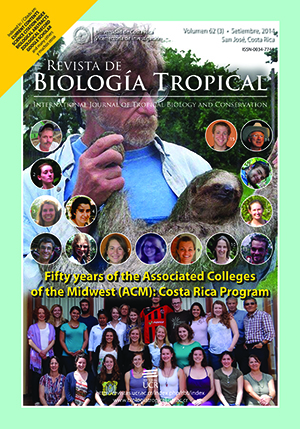Abstract
Age validation is the first step to determine shellfish species age determination. This information is vital for different inferential models used in marine ecosystem management activities. In spite that various validation techniques are used for marking carbon calcium structures, the calcein marking technique for oysters had never been used for age validation in Pinctada mazatlanica. Thus the objectives of this study included: the evaluation of calcein to mark a shell growing-edge, and the efficacy of Coomassie Blue staining on posterior shell growth, to produce visible micro growth-bands that would enable age validation of juvenile mother-of-pearl oysters. Oysters were collected and cultivated at The Perlas del Cortez S. de R. L. MI. pearl-farming operation, in Pichilingue, La Paz Bay, Baja California Sur, Mexico; a total of 36 oysters (shell height 11.5-36.4mm) were injected with calcein (0.125g/L), and another 50 oysters (shell height 14.8-42.7mm) were submersed in calcein (0.4 and 0.7g/L). Shell slices of calcein-marked oysters were posteriourly stained with Coomassie Blue R-25 for micro growth-band recognition. Our results showed that Calcein marking only worked by submersion and produced a concise bright lime-green florescent band along the growing-edge with clear boundaries for both concentrations. However, marks resulted better at the lower calcein concentration (0.4g/L) with more "perfect" and "good" marks on the growing-edge (p=0.0012). Commassie Blue staining technique was successful, and allowed to conclude that one micro growth-band was laid down per day, similar to other oyster species. Mean 15-d increment of shell growth height was slightly greater at the lower calcein concentration (=0.735mm) than at the higher one (=0.577mm) (not significant difference, p=0.198). Calcein marking of shell growing-edges and Commassie Blue staining of posterior shell growth, as a method for age validation is recommended for shellfish shell growth-band counts. This will allow back-dating for estimation of very precise colonization dates, both spatially and temporally in future work.##plugins.facebook.comentarios##

This work is licensed under a Creative Commons Attribution 4.0 International License.
Copyright (c) 2014 Revista de Biología Tropical
Downloads
Download data is not yet available.






